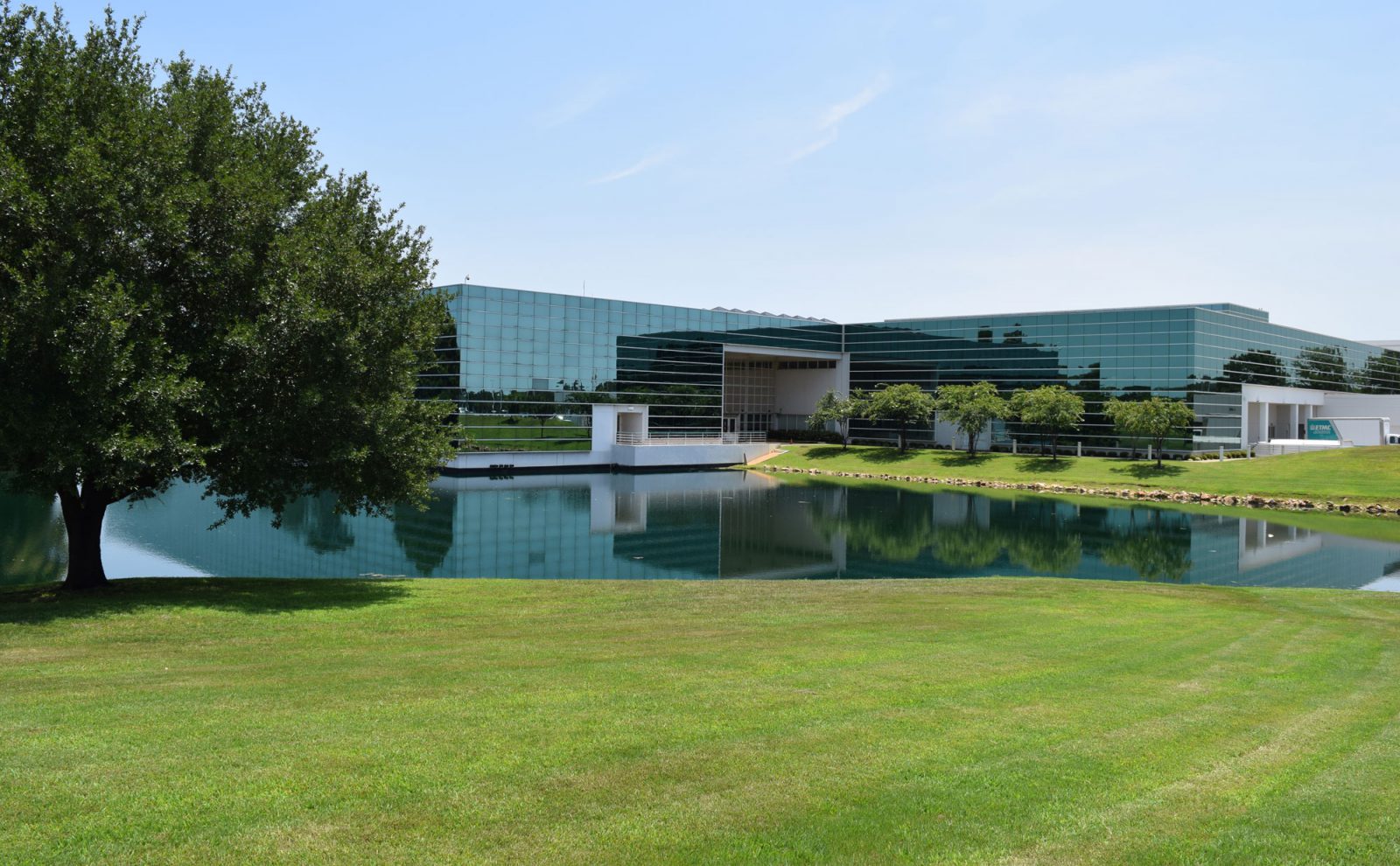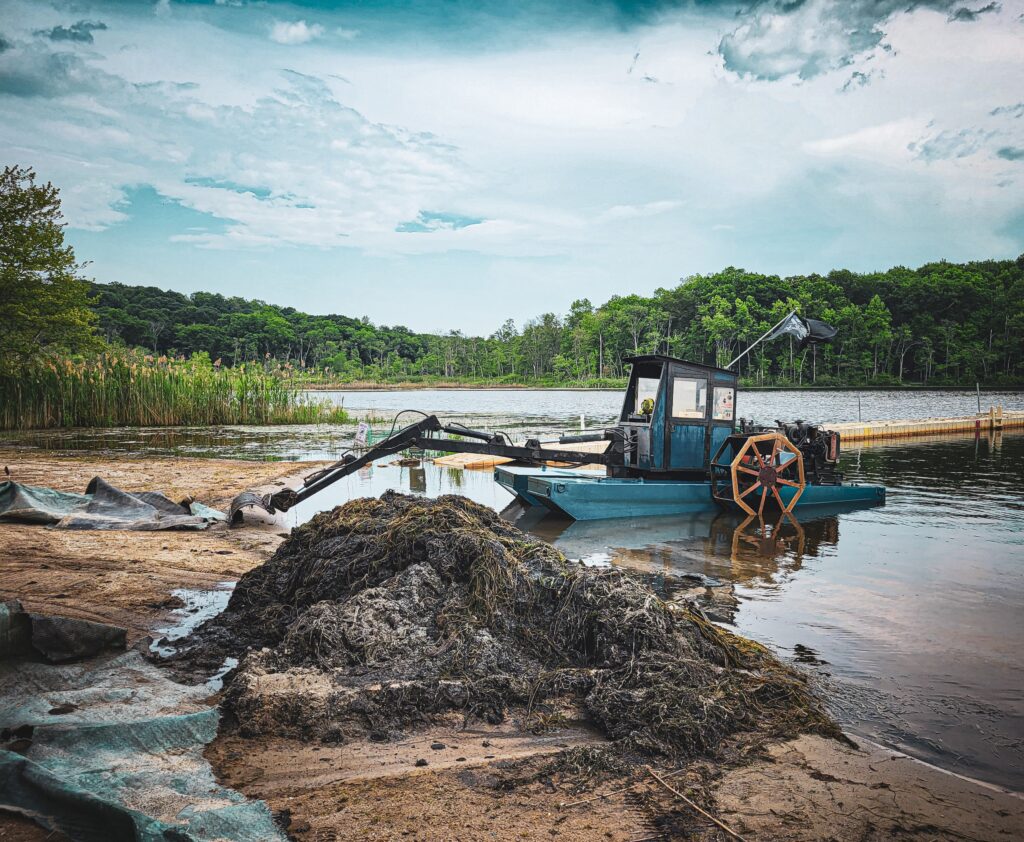
What Does It Mean When Your Lake or Pond Floods?
Lakes and ponds play many important roles in our communities. They support recreation, create opportunities to enjoy nature, and perhaps most importantly, they prevent flooding by collecting water during rainstorms. However, most of us have witnessed flash flooding at one point or another. These events can destabilize shorelines, destroy landscaping, trigger water quality issues, endanger residents, and even reduce property values. Flooding should be the last thing property owners and managers have to worry about during rainstorms. Understanding why flooding occurs and how to prevent it will give stakeholders peace of mind next time it rains.
How Man-Made Stormwater Ponds Work
Many ponds are man-made specifically for water collection. These waterbodies contain carefully designed equipment to filter stormwater and release it slowly into nearby waterways. In addition, stormwater ponds capture excess nutrients that have been swept up by flowing water, thus reducing nutrient pollution downstream. This is essential in urban areas where roads, parking lots, and other impervious surfaces prevent water from naturally absorbing into the ground.
However, without consistent management, stormwater ponds cannot function as designed. If they become obstructed by trash, debris, nuisance vegetation, or eroded sediment, the risk of flooding increases.
How Do Lakes and Ponds Fill-In with Sediment?
Erosion occurs naturally in lakes and ponds due to wind, rain, and wildlife activity. As eroded sediment accumulates over the years, the waterbody’s depth decreases and it becomes incapable of holding the same volume of water that it once did. Urban development, heavy recreation, irresponsible landscaping practices, and other human-related activities can dramatically accelerate this natural process.
Flooding Is A Sign of An Aging Lake or Pond
Ultimately, flooding is a sign that a lake or pond is aging – nearing the end of its functional lifespan. Eventually, mechanical dredging will be necessary to reset it to its original depth. During dredging projects, experts use specialized equipment to remove hundreds or thousands of pounds of muck and debris from the bottom. Though effective, dredging can be very costly and require years of budgeting and preparation.
Slow Your Waterbody's Aging with Proactive Solutions
Proactive management is the most effective way to prolong the need for dredging and prevent dangerous flooding. By partnering with an aquatic expert, property owners and managers can access a wealth of holistic tools, technologies, and resources to keep their waerbodies in peak condition.
Establish A Healthy Shoreline Buffer
The shoreline is the first line of defense against stormwater runoff. A healthy shoreline is abundant with native vegetation that extends 3-5 feet from the perimeter to create a robust buffer zone. During heavy rainstorms, vegetative buffers help slow the speed at which water flows into the lake or pond and filter out trash, debris, and other pollutants. Buffers also help deter recreation and nuisance wildlife activity in the immediate vicinity of the waterbody, reducing wear and tear along the banks. Finally, vegetative buffers create complex root systems to hold soil in place and improve the integrity of the shoreline as time goes on.
Control Nuisance & Invasive Aquatic Plant Growth
Managing plant growth within the waterbody is just as important. Native aquatic plants are an important part of a healthy ecosystem, but nuisance and invasive species can disrupt the environmental dynamics by growing, dying, and decomposing at explosive rates, accelerating the accumulation of bottom muck. Licensed aquatic experts can utilize EPA-registered herbicides to target nuisance growth, followed by solutions to eliminate the nutrients required for future plant development.
Promote Healthy Nutrient and Oxygen Levels
Beneficial bacteria can be introduced to the waterbody to facilitate the natural “digestion” of decomposing organic matter through a process called biological augmentation. Similar to a probiotic, biologicals help support ecological balance within the water column. Fountains and aerators help complement this process by increasing dissolved oxygen (DO) levels. DO is a necessary part of the decomposition process and can help make it more efficient. Water quality testing can provide a detailed look at DO levels, as well as other water quality parameters.
Avoid Costly Dredging with Regular Hydro-raking
Though it’s possible to significantly slow the accumulation of muck and sediment, there will be inevitable signs of build-up over time. Hydro-raking is an excellent solution to physically remove build-up exactly where it’s needed. A mechanical hydro-rake is essentially a floating barge equipped with a backhoe capable of removing up to 500 pounds of materials in each scoop. Aquatic experts can deposit it on the shore for off-site disposal, or repurpose it during shoreline restoration projects.
Properly Plan for Depth Restoration with Lake Mapping
Identifying the cause behind flooding problems is the first step in restoring the functionality of a waterbody. Flooding can be a sign of natural accumulation or more critical problems that require swift intervention by a professional. Sometimes, experts may use advanced equipment like bathymetric mapping technology to gain a highly accurate picture of the bottom of the lake or pond, complete with the unique peaks and contours that affect its capacity to hold water.
Develop A Plan. Enjoy Your Water for Years to Come!
By partnering with a professional, stakeholders can rest assured their waterbody is regularly monitored and managed to limit build-up and keep water flowing as intended during every storm, so it can be a source of pride and enjoyment for years to come.
Contact Us to Restore Your Water
Call us at 888-480-5253 or complete the form below to connect with an aquatic management expert.
SOLitude Lake Management is a nationwide environmental firm committed to providing sustainable solutions that improve water quality, enhance beauty and preserve natural resources.
SOLitude’s team of aquatic scientists specializes in the development and execution of customized lake, stormwater pond, wetland and fisheries management programs. Services include water quality testing and restoration, algae and aquatic weed control, installation and maintenance of fountains and aeration systems, shoreline erosion control, muck and sediment removal and invasive species management. SOLitude partners with homeowners associations, golf courses, private landowners, businesses and municipalities. SOLitude Lake Management is part of Rentokil, a leading business services company, operating across the United States, Canada and Puerto Rico.
For more information, visit SOLitude Lake Management at solitudelakemanagement.com, and connect on Facebook, LinkedIn and Twitter.
























